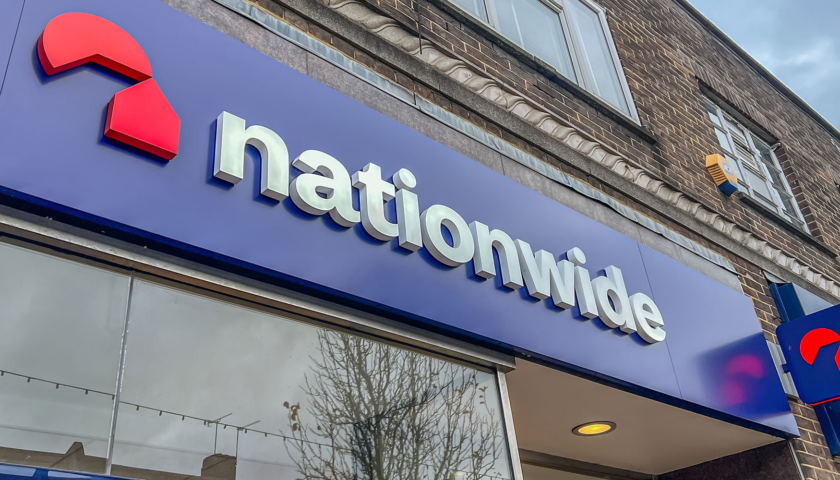First-time buyers with just a 5 per cent deposit could now get a mortgage that is part interest-only.
Mortgage lender Gen H is offering a part repayment, part interest-only mortgage targeted at first-time buyers with small deposits.
This type of mortgage was common before the 2008 financial crisis, but is now much less so. It is usually restricted to those with large salaries and a deposit of 20 per cent or more.
Gen H will allow buyers to take up to 80 per cent of their mortgage on an interest-only basis, with the remainder of the loan being on a traditional repayment mortgage.
Borrowers will also be allowed to make overpayments if they wish to reduce their total balance, subject to certain limits.
With an interest-only mortgage, buyers pay only the interest on the loan back each month. They then have to repay the amount they initially borrowed back at the end of the term – normally through investments or savings, or by selling the property.
This differs from a typical repayment mortgage where the borrower pays back a part of the loan, as well as the interest, each month until they eventually pay off the mortgage.
With interest-only, the monthly payments will be lower – but the full amount borrowed will still need to be repaid at the end of the mortgage term.
Who is eligible for the interest-only mortgage?
Gen H expects this mortgage product to appeal to those who can afford rent, but don’t have the cash upfront for a large deposit, perhaps because they don’t have any family support.
Buyers will need a household income of at least £50,000 to apply.
As an example, a couple wishing to buy a £400,000 property, each earning £35,000 annually could buy with a £20,000 deposit.
They can’t get approved for a £2,157 per month mortgage with a high street bank, even though they’re paying £2,000 in rent currently.
But by putting 50 per cent of the mortgage on interest-only with Gen H, they could reduce their monthly payment to £1,939.
Pete Dockar, chief commercial officer at Gen H, said: ‘In a country where the average house price is eight times the average salary – to say nothing of places like London – the best mortgage products are those that can be carefully tailored to suit the needs of individual buyers.
‘Part and part mortgages do exactly that. No more renting. No need for family help. And unlike shared ownership, there’s no staircasing, no frustrating administration, and no rent to be paid, just 100 per cent homeownership from day one.
‘We are thrilled to make this product available to our broker panel and to the growing number of clients they may now be able to support.’
Nicholas Mendes, mortgage technical manager at John Charcol, added: ‘Borrowers who narrowly miss full repayment affordability can dial in an interest only slice to bring the monthly cost within reach, while still owning 100 per cent from day one and retaining the ability to overpay.
‘The trade-off is that any interest only balance must still be cleared at the end of the term, so borrowers need a credible plan via overpayments, future income, or equity growth.
‘Buyers should look at the total costs rather than just the headline rate, including fees and any early repayment charges.’
What are the rates?
Rates will vary depending on the size of someone’s deposit, but it is highly likely borrowers opting for Gen H’s deal will be on a higher rate than those with more mainstream lenders.
Those buying with a 5 per cent deposit can secure a five-year fix at 5.91 per cent, or a two-year fix at 5.99 per cent. Both come with a £1,499 fee.
These rates are more expensive than those that would be offered on standard repayment mortgage products.
The cheapest five-year fix for someone with a 5 per cent deposit is currently around 4.77 per cent, with a £1,099 fee.
What are the risks?
Interest-only mortgages were popular among home buyers in the 1980s to the mid-2000s, often sold alongside endowments – investment schemes which promised to grow enough to pay back the loan by the end of the term.
But their popularity waned as some of these endowments failed to make the promised returns, leaving borrowers in the lurch.
The rules on interest-only mortgages were then tightened in the aftermath of the financial crisis.
Today they are mostly used by buy-to-let landlords, as they allow them to keep hold of cash which they can invest in growing their portfolio.
Another group which often makes use of them is wealthy and financially savvy borrowers – for example those who get big bonuses, and want to be able to pay off their mortgage in large but irregular chunks.
In 2007, half of first-time buyers used interest only products, according to Gen H. Today, that number has fallen to just 1 per cent.
Nicholas Mendes, mortgage technical manager at John Charcol says while the product is not inherently dangerous, the risk is that people will use it so they can afford the monthly payments, while not having any credible plan to pay off the mortgage in the long run.
‘The key is making sure borrowers understand that the interest-only portion does not disappear and that a plan is in place to pay it down over time,’ he said.
Contact one of our highly experienced mortgage advisors today on 0121 500 6316 to discuss your mortgage needs.



